Picture this: a student walks across the stage, diploma in hand, pride in every step. Four years of lectures, late nights, and caffeine-fueled deadlines have finally paid off.
A few months later, they start their first job, only to realize that theory and reality don’t always speak the same language.
They know what to do in principle. But in practice? Meetings, clients, projects that shift direction overnight, no textbook prepared them for that.
That quiet moment of uncertainty is something many graduates face. It’s not a failure of intelligence, it’s a failure of translation.
And that’s exactly what work-based learning (WBL) is here to fix.
At Nexgen Careers, we believe education shouldn’t stop at the classroom door. It should open into the world, where students don’t just learn, but do.
The Great Shift: From Degrees to Skills
For generations, we’ve measured readiness in degrees and diplomas. But in a world reshaped by technology, automation, and global competition, that’s no longer enough.
According to the OECD’s 2025 Skills-First report, the future of employability depends less on what you’ve studied and more on what you can actually do (OECD, 2025).
The World Economic Forum echoes this: adaptability, collaboration, and problem-solving now rank among the top global skills for 2025, even above technical expertise. (World Economic Forum, 2025).
And UNESCO, together with the ILO and World Bank, warns that education systems must evolve to prepare learners for “jobs that don’t yet exist” (UNESCO, 2024).
The message is clear: learning isn’t just about knowledge, it’s about transfer.
The ability to take what you’ve learned in theory and make it work in practice.
So What Is Work-Based Learning, Really?
At its core, work-based learning is education that happens through work, not just before it.
It blends classroom theory with real-world experience: internships, apprenticeships, live client challenges, and industry-led projects.
The OECD calls the workplace “a powerful learning environment” where students can build both technical expertise and essential soft skills like teamwork, communication, and adaptability.
But true WBL is more than just “work experience.” It’s a partnership — between students, educators, and employers — where learning is deliberate, reflective, and deeply practical.
As UNESCO’s 2024 report puts it, “Work-based learning provides individuals with the skills needed to successfully obtain and keep jobs, and to progress in their careers”.
In other words: it’s education that sticks.
Why It Matters Now
There’s a quiet revolution happening in education, one that moves away from memorization and toward application.
Studies show why.
A 2024 study published on ResearchGate found that vocational students who engaged in teamwork-driven WBL programs developed stronger employability skills, particularly collaboration and communication (ResearchGate, 2024).
The OECD also reports that structured WBL significantly improves employment outcomes for young people, especially those facing barriers to entry.
And McKinsey’s Future of Work Report (2024) adds that up to 50% of job tasks could soon be automated, meaning uniquely human skills like creativity, leadership, and problem-solving will become non-negotiable.(McKinsey, 2024)
Work-based learning is how we prepare for that world, by making education a rehearsal for reality.
Learning in Motion: When Experience Brings Lessons to Life
Across Nexgen’s work-based programs, students have taken their learning beyond the classroom, solving real business challenges with employers and mentors from around the world.
In The Open Challenge, for example, participants have collaborated on projects ranging from designing digital marketing strategies for social enterprises to building sustainability plans for start-ups expanding into new markets.
These aren’t hypothetical exercises they’re real briefs, real teams, and real deadlines. Students quickly discover that applying theory under real-world pressure feels different. It’s where learning stops being abstract and starts becoming alive.
Every challenge becomes a proving ground, co-designed with employers, guided by educators, and led by students eager to test their skills.
They don’t just study innovation. They practice it.
A Bridge, Not a Detour
The beauty of work-based learning is that it doesn’t replace the classroom, it completes it.
The classroom gives theory, structure, and reflection. The workplace gives context, consequence, and collaboration. Together, they form a continuous loop:
Learn → Apply → Reflect → Grow.
For educators, this means reimagining courses around experience, embedding employer projects into the curriculum rather than treating them as extras.
For students, it means showing up not as observers but as contributors, ready to make mistakes, learn fast, and think critically.
For employers, it’s an opportunity to shape the next generation of talent and to learn from their fresh perspectives in return.
When done well, WBL isn’t just a “program.” It’s a culture, a way of learning that prepares students for life, not just for work.
The Future Belongs to the Connectors
The future of education isn’t about replacing teachers with technology or turning universities into job factories.
It’s about connection, linking theory to practice, intention to action, and students to opportunity.
The OECD’s Education 2030 Framework says it best: the goal of modern learning is to develop “knowledge, skills, attitudes, and values” that empower people to shape their own futures (OECD, 2024).
That’s exactly what work-based learning does, it helps students not just adapt to change, but drive it.
Because the best kind of readiness isn’t just academic. It’s human.
At Nexgen Careers, we’re building that bridge — one challenge, one student, one partnership at a time.
Because the future doesn’t belong to those who simply graduate.
It belongs to those who learn by doing and turn learning into real-world impact.




